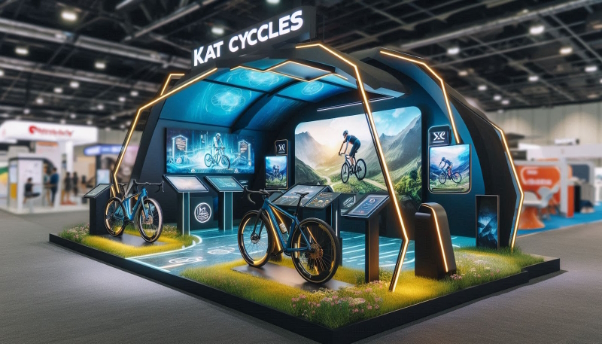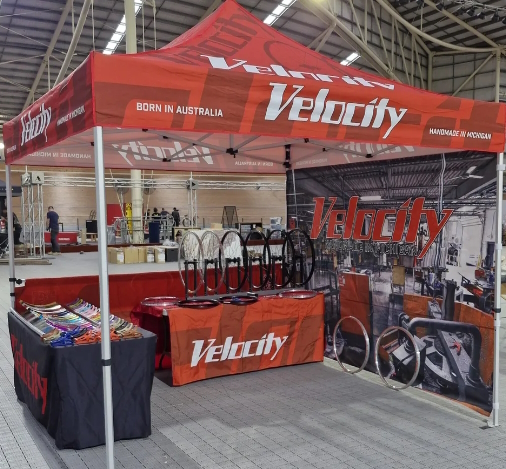Psychology of Trade Show Displays: Designing for Maximum Visitor Attraction
In this article, you'll discover how to create custom trade show displays that attract event attendees by applying psychological principles, such as first impressions, social proof, cognitive fluency, and emotional engagement. You'll also gain insights into designing exhibit booths that not only appeal to booth visitors, but foster meaningful connections that drive potential business opportunities.

In a bustling trade show environment, grabbing attention isn't just about having the flashiest booth. To truly engage attendees, businesses need to tap into the psychology behind human behavior.
Understanding what motivates people, how they process visual information, and what triggers decision making can help create more effective trade show displays. By leveraging these insights, companies can design booths that attract the greatest number of high-opportunity attendees, while encouraging them to interact. This leads to deeper connections with potential buyers and greater show results.
The Power of First Impressions
Research shows that people form impressions within seconds. In fact, a study published in the journal, Psychological Science, reveals that individuals make snap judgments in as little as one tenth of a second, based solely on visual cues. At a trade show, where competition for attention is fierce, the first impression of your custom trade show display can make or break your success.
For example, a cluttered or confusing booth is likely to repel attendees. On the other hand, a well-designed, visually appealing display with a clear message is more likely to draw people in. Keeping the exhibit design clean, incorporating bold, contrasting colors, and using large, easy-to-read fonts are all simple ways to make your trade show display more inviting.
Key Elements for First Impressions:
- Simplicity: Too much information can overwhelm visitors. Focus on a clear, concise message that conveys your brand or product in an instant.
- Color Psychology: Choose colors that evoke the emotions you want to associate with your brand. Blue often signals trust, while red can evoke excitement or urgency.
- Eye-Level Placement: Place the most important elements of your display at eye level. This ensures that visitors see the critical information first.
Harnessing the Power of Social Proof
Social proof is a powerful psychological phenomenon that can significantly enhance the effectiveness of a custom trade show display. People are more likely to engage with a booth if they see others doing the same. Studies, including one from Research Gate, show that when individuals see others interacting with a brand, they are more inclined to follow suit due to a fear of missing out.
Design elements that promote social interaction—such as interactive displays, live product demonstrations, or giveaways—can create a crowd around your booth. This not only draws more visitors, but also builds an air of credibility and desirability around your brand.
Techniques to Leverage Social Proof:
- Interactive Displays: Encourage attendees to touch, try, or experience your product. The more engagement you can generate, the more interest you'll attract.
- Testimonials and Case Studies: Including visual proof of satisfied clients, success stories, or awards on your booth can instill trust in passersby.
The Role of Cognitive Fluency in Visitor Engagement
Cognitive fluency refers to the ease with which information is processed. The easier it is for people to understand and interact with your display, the more likely they are to engage. Research published by the National Center for Biotechnology Information highlights that individuals prefer visuals and messages that are easy to digest and familiar. When designing a trade show display, it’s crucial to present information in a way that is intuitive and not overly complicated.
Use familiar symbols, universally recognized icons, and straightforward language to ensure that visitors quickly grasp your message. A complex or overly technical booth will deter engagement, while a clear, well-structured display will invite it.
Cognitive Fluency Tips:
- Consistent Branding: Use your company’s logo, colors, and fonts consistently across all elements of the display. This helps visitors recognize your brand more easily.
- Simple Navigation: Make it clear where visitors should look, stand, and engage. Use arrows, clear signage, or even floor decals to guide their experience.
The Role of Emotion in Decision Making
Emotions play a central role in how people make decisions. In fact, neuroscientist Antonio Damasio’s studies on decision making reveal that emotions are a critical part of human choice—whether conscious or unconscious. Trade show displays that evoke positive emotions can leave a lasting impression on attendees, influencing their perception of your brand long after the event.
One way to connect emotionally is through storytelling. Incorporating stories into your trade show display—whether through video content, infographics, or live demonstrations—can create an emotional connection with attendees. Emotional triggers such as nostalgia, empathy, or humor can also be effective in engaging visitors.
Emotional Engagement Strategies:
- Storytelling: Share your brand’s journey or highlight how your products solve common challenges. Attendees are more likely to remember a good story than a list of features.
- Personalization: Offer experiences or displays that feel tailored to the individual. For instance, you could have a photo booth that adds visitors’ names to product displays, creating a sense of ownership.

The Importance of Sensory Stimulation
Humans are sensory beings, and custom trade show displays that appeal to multiple senses—sight, sound, smell, and touch—are more likely to stand out in attendees' minds. A research article from Psychology and Marketing found that multi-sensory experiences can increase emotional engagement and enhance memory retention.
To incorporate sensory elements, consider adding dynamic lighting, soundscapes, or even scents to your booth. Allowing visitors to touch and feel products can also make the experience more tangible and memorable.
Multi-Sensory Ideas:
- Visual: Use motion graphics on a tv screen or rotating product displays to create a visually dynamic environment.
- Auditory: Soft background music or sound effects related to your product can create an immersive atmosphere.
- Tactile: If possible, let visitors physically interact with your products or prototypes.
Conclusion
Designing a trade show display that maximizes visitor attraction is both an art and a science. By understanding the psychological principles that influence human behavior—first impressions, social proof, cognitive fluency, emotional engagement, and sensory stimulation—businesses can create compelling displays that draw in visitors and drive meaningful connections.
A well-thought-out display goes beyond aesthetics; it leverages these principles to create a memorable experience, giving your brand the edge it needs in a competitive trade show environment.
Related Information - Custom Trade Show Displays
Trade Show Exhibit Display Strategies
Trade Show Booth Ideas
Booth Graphics that Draw People In
How to Choose an Exhibit Designer
Trade Show Resources
Share Success Tips Do you have a great exhibiting or marketing tip that enhanced
your trade show results? Share it here! |



